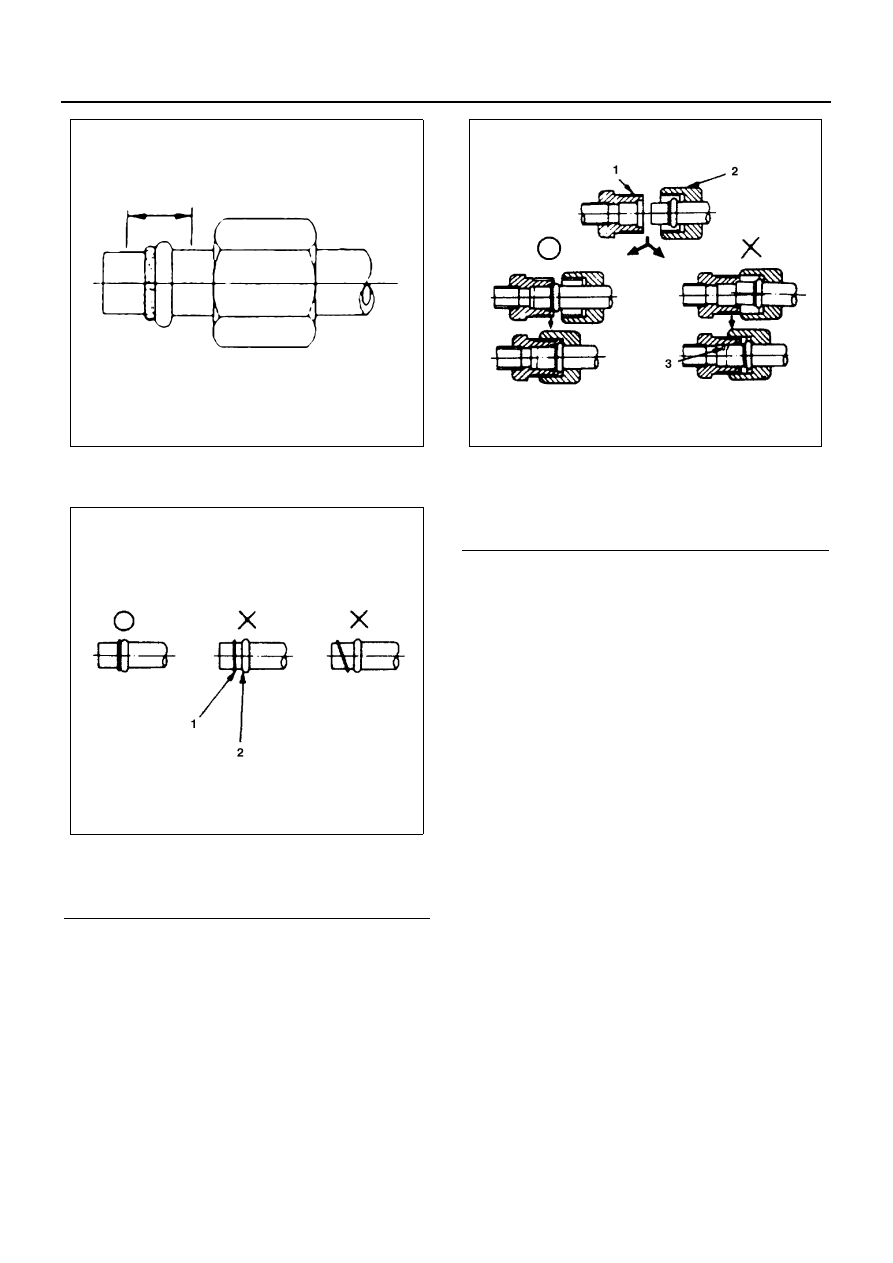Isuzu N-Series. Manual - part 61

1B-14 AIR CONDITIONING
O-rings must be closely aligned with raised portion of re-
frigerant line.
Insert nut into union. First tighten nut by hand as much
as possible. Then, tighten nut to specified torque.
(Refer to “SERVICE INFORMATION” for Fixing Torque
in section 00)
Leak at Refrigerant Line Connections
1. Check the torque on the refrigerant line fitting and,
if too loose, tighten to the specified torque.
• Use two wrenches to prevent twisting and damage
to the Line.
• Do not over tighten.
2. Perform a leak test on the refrigerant line fitting.
3. If the leak is still present, discharge and recover the
refrigerant from the system.
4. Replace the O-rings.
• O-rings cannot be reused. Always replace with
new ones.
• Be sure to apply specified compressor oil to the
new O-rings.
5. Retighten the refrigerant line fitting to the specified
torque.
• Use two wrenches to prevent twisting and damage
to the line.
6. Evacuate, charge and retest the system.
Leak in The Hose
If the compressor inlet or outlet hose is leaking, the en-
tire hose must be replaced. Refrigerant hose must not
be cut or spliced for repair.
1. Locate the leak.
2. Discharge and recover the refrigerant.
3. Remove the hose assembly.
• Cap the open connections at once.
4. Connect the new hose assembly.
• Use two wrenches to prevent twisting or damage to
the hose fitting.
Legend
1. O-ring
2. Raised portion
N1A0064E
N1A0065E
Legend
1. Union
2. Nut
3. Damage
N1A0066E